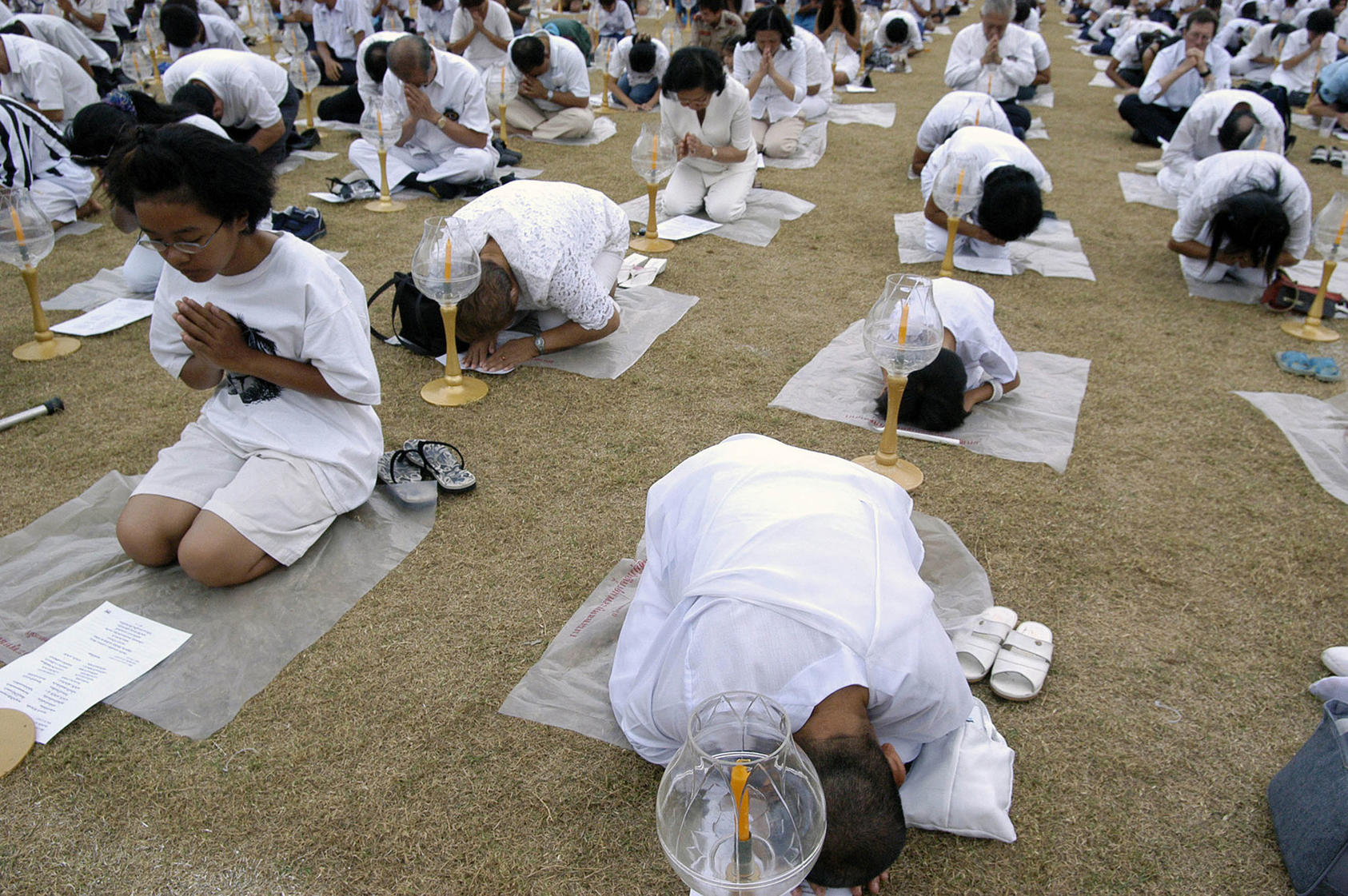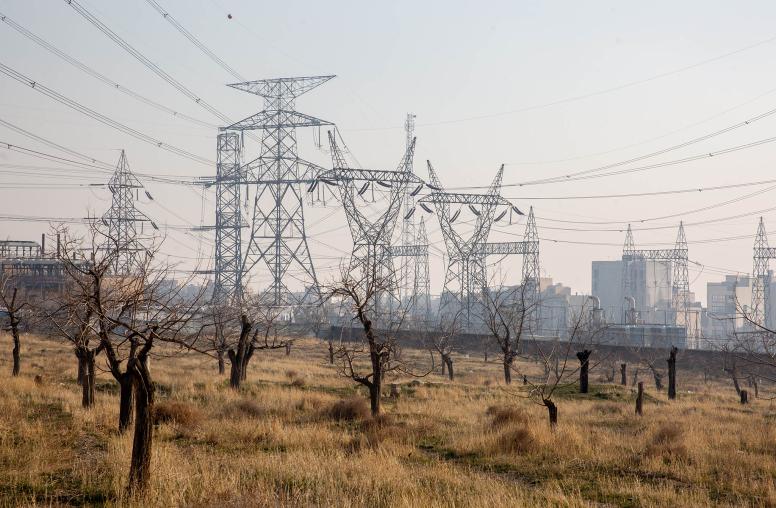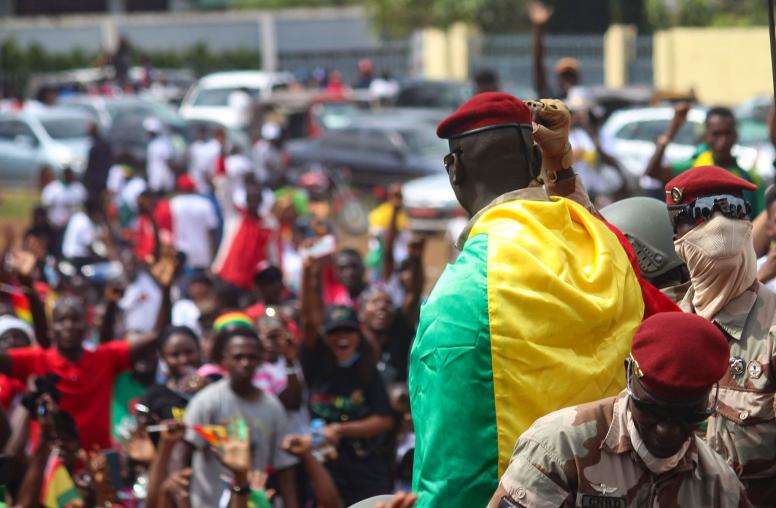On Climate: To Save the Human Planet, Ally with Human Faith
The campaign to resist climate change must accept a powerful offer of help from religious communities.
Humanity’s preservation of a habitable planet now requires policymakers, environmentalists and others to rally billions of people in resisting climate change through a painful remaking of our very economies and societies. Our struggle to build this unprecedented global commitment — notably against headwinds of pandemics, poverty and wars — urgently requires that we build partnership and synergy with a powerful group of allies: religious communities.

As climate activists work to build the critical mass of humanity needed to change global society, religious communities form an unparalleled channel to billions of hearts and minds. While religious affiliation has eroded in the United States and Europe, research over a decade finds that 80 percent or more of people worldwide identify with a religious group — and that this proportion is growing. Even better, religious leaders and organizations have been escalating their own outreach to environmental communities — creating a new opportunity to build vital coalitions on climate problems.
Religious enlistment in the fight for the planet has been growing for years. Pope Francis issued his first major appeal in 2015, an encyclical urging “a new dialogue about how we are shaping the future of our planet … a conversation which includes everyone, since the environmental challenge we are undergoing, and its human roots, concern and affect us all.” In the past six months, religious leaders joined policymakers and environment advocates at two of the world’s most vital environmental conferences, one of which saw the largest ever online interfaith dialogue of religion and environment. Fazlun Khalid, a speaker at that dialogue and a pioneer of Islamic environmentalism cites the Quran. “The creation of the heavens and the earth is far greater than the creation of humankind,” he says, and we must protect the earth because “by causing it grievous bodily harm, we harm ourselves.”
That commitment is visible in the Jordanian town of Irbid, where Imam Ameen Alawneh has joined 1,800 Islamic religious leaders and scholars to lead their congregations in defense of the local and global environment. Imams incorporated messages of water conservation into Friday sermons that reach 4 million worshippers and supported a program to convert Jordan’s 6,000 mosques to solar power. This trend has bolstered the local solar market and opened economic opportunities with Israel to exchange electricity for desalinated water, a critical resource in water-stressed Jordan.
Meanwhile, in Central America and elsewhere, groups such as the Interfaith Rainforest Initiative protect green spaces, and indigenous communities who safeguard them, by combining religious and indigenous efforts. These efforts build on a growing movement among religious actors — including disparate faith-based organizations and religious activists and communities — to advance solutions to care for our common home. Such religious actors are well-positioned to advocate and model change, connect big goals to individual actions, and amplify the voices of those most vulnerable to environmental devastation.
To be sure, research is divided on whether religious beliefs strongly shape people’s attitudes toward the climate crisis or whether, instead, their attitudes are more strongly correlated to their political or social views. Not every religious community or institution is a potential ally for environmental advocacy — and some may indeed hinder it.
Religion, Peace and Climate Change
Many religious traditions emphasize the importance of environmental stewardship and caring for the least privileged people. Yet religious actors are often overlooked as powerful voices in campaigns to spur action on climate change.
Religious constituencies also can bring peacebuilding resources to address the problem, increasingly recognized, that our changing climate is exacerbating violent conflicts and deepening discrimination against people at societies’ margins. Among those discriminated against and most vulnerable to climate change include indigenous communities. The spiritual connections of many indigenous peoples with the earth serve as an example that safeguards nature and enhances human well-being. Indigenous groups in Ecuador and Peru lead an Amazon Sacred Headwaters Initiative to protect 65 million acres of rainforest and indigenous lands from deforestation, oil drilling and mining. As the world hurtles toward a risk-filled climate future, it will be essential to draw on moral norms within indigenous and religious traditions — including those of justice, compassion and reciprocity — in peacefully protecting the planet and its most vulnerable people.
Religious Actors Make a Difference
Religions and their representatives bring unique themes, energy and abilities that complement and strengthen the existing approaches of an environmental movement often dominated by secular groups. They advance themes such as the interdependence of climate, peace and justice, and the need for collective responsibility and action. Many religious organizations, rooted in multiple regions, bring a vital spirit of cross-border collaboration. Religious representatives have elevated their profile at important venues such as the U.N. Climate Change Conference, organized street protests and prayer services, and petitions urging governments to move from promises to action.
Among the strengths that religious groups bring to countering the climate crisis are these:
Uplifting marginalized and indigenous peoples. Recognizing religious institutions’ dark colonial past, many religious groups increasingly are working with local and indigenous people on solutions to climate change. At international conferences that help to shape the world’s response, religious representatives have fostered model, equal partnerships between religious and indigenous leaders on nature and the climate. One example: At the most recent U.N. Climate Change conference, in 2021, religious groups organized a forum to advance that effort, calling it “Making Peace with Nature: Heeding the Call of Indigenous Peoples.”
Many indigenous people protect their land and resources in the face of deadly risks. The human rights organization Global Witness reports that in 2020 alone, attackers linked to “unaccountable corporate power” killed more than 200 environmental defenders worldwide, targeting indigenous people in fully a third of those murders. In Central America, where such attacks are common, the Catholic peace movement Pax Christi partners with indigenous communities to nonviolently resist mining, logging or other extractive projects that destroy forests and poison waters. After years of protests and support from the Catholic Church and organizations like Pax Christi, El Salvador banned all metal mining in 2017.
Connecting high-level and individual engagement for the environment. The politics of global conferences and policy debates can distract from the moral, people-centered aspects of responding to climate change. Religious leaders promote re-connection — between the political and the moral, and between elites and grassroots communities. Like Pope Francis, the Dalai Lama has done this, emphasizing people’s “universal responsibility for mankind and nature,” and our need to live in peace with both.
Religious leaders are also effective messengers to broad populations, commanding public trust and respect — often more than politicians. In many countries, religiously based organizations have a strong presence at local levels, providing important services including health and education. Collectively, religiously based organizations own half of all schools in the world and 14 percent of community development organizations, according to the U.N. Environment Program — vital channels for building the necessary global consensus to protect the planet.
Modeling action for change. Scores of religious activists have united under the banner of “climate justice” to push political leaders to increase their commitments to reduce greenhouse gases and protect the environment. A coalition of Protestant and Catholic church-based groups, the Global Prayer and Action Chain for Climate Justice, gathered petitions calling on governments to limit global warming to 1.5°C — the goal proposed by the global Paris Agreement in 2015. The coalition sent activists to Glasgow last fall to underscore public support, including from religious leaders and youth, for that heightened response to climate change.
Interfaith groups have collaborated to protect the Jordan River, a spiritual landmark for different religions. The environmental organization EcoPeace Middle East organized community discussions among Muslim, Christian and Jewish communities in Jordan, Palestine and Israel. These interfaith environmental advocates jointly urged the governments of Jordan, Israel and the Palestinian Authority to invest in rehabilitating the river.
Recommendations
Political and scientific authorities should coordinate with religious constituencies to jointly accomplish environmental and security objectives. The value of building alliances with willing religious partners is twofold. Such partnerships can improve communication and action in local communities. Also, religious visions of justice and commitment to solidarity can help sustain efforts to combat the climate crisis — and keep them peaceful and inclusive.
Just weeks ago, a coalition of religious representatives made this argument eloquently at the fifth session of the United Nations Environmental Assembly, in Nairobi. In their closing statement they wrote: “Collaboration with faith actors at all levels ... represents a fundamental opportunity to seek transformational change at the heart of the human relationship to the natural world in which we all live and a hope upon which our future depends.”
Chris Collins is a research assistant and Mona Hein is a researcher at the U.S. Institute of Peace.



